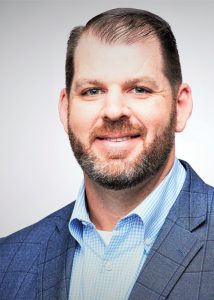A hard market brings new challenges
By Joseph S. Harrington, CPCU
No news is good news, in some circumstances. When assessing today’s market for insurance agent and broker errors and omissions (E&O) insurance, what stands out is what’s not there, at least not yet.
During and soon after the COVID-19 pandemic of 2020, producers were warned in a CRC Group article to “brace for a coming wave” or “tsunami” of E&O claims triggered by economic losses incurred when businesses were forced to shut down. Since insurers were largely successful in denying business income claims arising from the pandemic, observers reasoned that policyholders would go after their agents and brokers for failing to secure the necessary coverage.
If that has happened, there’s been very little sign of it, which is a good thing for producers grappling with the first sustained hard market in decades—one that presents some new challenges.
Headwinds
For one thing, there are significant headwinds affecting both sides of the business, with natural catastrophes and “social inflation” driving up property and liability losses, respectively.
Those losses are driving some admitted carriers out of markets for standard classes of personal and commercial business. As a result, agents and brokers find themselves relying more heavily on excess and surplus lines (E&S) markets, where they encounter more non-standard policy forms and rapid fluctuations in rates.
“Any time you place coverage with E&S carriers you can see big premium swings and/or coverage restrictions from year to year,” says Jason Rogers, area president of Gallagher Affinity.
“Moving business from admitted markets into the E&S market has been challenging for agents who have to explain the differences in coverages between admitted and E&S forms,” says Amanda Chambless, FMS operations manager for the Florida Association of Insurance Agents (FAIA).
Today’s hard market also comes at a time when most accounts are purchasing more types of insurance than during previous hard markets. The best example of this is cyber insurance, a complex product with numerous insuring agreements, exclusions, and sub-limits.
Add in growing demand for management, professional, and environmental liability coverage, and one can readily see how demands on today’s agents and brokers have grown since the last time they were confronted with a sustained period of rising rates and falling capacity.
“The insurance agency E&O market has experienced rapid change over the last few years,” Chambless observes. “We have seen several carriers change their appetite for underwriting E&O, resulting in non-renewal of entire books of business or large portions of them. Also, some carriers are limiting coverage significantly by adding exclusions.”
More recently, the agent E&O market has “normalized,” in the words of Brian Pasternack, agents E&O underwriter for Rockwood Programs, Inc., adding that “2023 seems to have been a little static with not much movement from key market players.”
Lagging results
Experts in agent E&O coverage emphasize that trends in the line are lagging indicators of the underlying cost drivers, so buyers haven’t seen rate hikes and capacity restrictions quite as severe as what their customers are seeing for other lines.

“Many of our clients are selling their books of business as they merge or retire. … If a prospective sale is on the horizon, we ask our carriers to provide options for covering claims submitted beyond the policy period.”
—Jason Rogers
Area President
Gallagher Affinity
“I would characterize the E&O market as firming,” says Rogers. “Insurers have been facing inflationary pressures and are raising premiums to offset those pressures. When you couple this with other trends, such as higher reinsurance costs, higher defense costs, and historic catastrophe losses, I don’t foresee E&O rates softening any time soon.”
Rogers notes that changes in the market aren’t only driven by supply, but also by a change in demand as driven by agency mergers and retirements.
“Many of our clients are selling their books of business as they merge or retire,” he says. “We remind our clients that E&O policies often don’t have extended reporting periods or longtail coverage within the base form. If a prospective sale is on the horizon, we ask our carriers to provide options for covering claims submitted beyond the policy period.”

“We have seen several carriers change their appetite for underwriting E&O, resulting in non-renewal of entire books of business or large portions of them. Also, some carriers are limiting coverage significantly by adding exclusions.”
—Amanda Chambless
FMS Operations Manager
Rogers emphasizes that the right professional liability coverage for insurance agents and brokers is usually found in policy forms written specifically for that class of business.
“One thing we see are prospective clients who come to us without having the correct E&O coverage in place,” he says. “Many are covered under a Miscellaneous Professional Liability (MPL) policy, and not all MPL policies are created equal. There are some very good ones, but many lack core coverages and coverage extensions that producers need to be properly insured.”
Restrictions
According to Chambless, some E&O carriers are implementing policy changes to curb their loss exposure.
Under liability policies, she finds E&O carriers implementing more restrictive “claims made and reported” coverage triggers in lieu of pure “claims made” triggers while also expanding warranty statements on renewal applications, effectively increasing an agency’s responsibility for reporting potential incidents. She adds that insurers who previously covered defense costs outside of policy limits are moving to covering them within limits, reducing the extent of coverage.
For property coverage, FAIA members have seen carriers introduce exclusions for losses arising from errors and omissions in the valuation of tangible property, a growing source of loss at a time when frequent natural catastrophes and construction cost inflation is driving up replacement costs. FAIA members also report that some carriers are reducing the “carve-back” coverage available under insolvency exclusions.

Florida Association of Insurance Agents “It’s important for agents to consider whether they are acting as an order taker or as an advisor. This distinction has a significant impact on an agent’s standard of care and ultimate liability and defenses in the event of a claim.”
—Eric Kaufer
Attorney
Wilson Elser Moskowitz Edelman & Dicker
It’s no surprise that FAIA members find both rates and deductibles for E&O coverage trending upwards while limits are constrained. “Many carriers will only offer $1 million to $2 million in limits of liability,” she says. “We’re not seeing many carriers, outside of Swiss Re [the association’s partner for E&O], offering options for increased limits at renewal.”
“Higher limits of $10 million or more are increasingly difficult to find in today’s market,” says Rogers. “In the past we were able to secure higher limits with one carrier. We now have to put excess carriers in place, which drives up costs for our clients.
“For many of our clients, these higher limits are required under contractual obligations that must be satisfied.”
Advisor or order taker?
Insurance agents and brokers wouldn’t need so much E&O insurance if their clients only did what producers hoped they would do: buy as much coverage as they possibly can, all types and amounts of insurance.
Failure to procure appropriate coverage and failure to procure sufficient coverage continue to be the two leading causes of agent E&O claims and losses, according to attorney Eric Kaufer of the firm Wilson Elser Moskowitz Edelman & Dicker, which serves as claims administrator for Rockwood Programs.
While most agents today pride themselves in being risk counselors and not mere order takers, a distinction that sets them apart from online portals, Kaufer cautions producers to carefully weigh how they present themselves to clients.
“It’s important for agents to consider whether they are acting as an order taker or as an advisor,” Kaufer says. “This distinction has a significant impact on an agent’s standard of care and ultimate liability and defenses in the event of a claim.
“The emergence of artificial intelligence will create a challenging landscape in 2024. Will agencies—large and small—employ ‘chat bots’ for customer service? What is the potential for AI to make an error when interacting with a customer?”
—Brian Pasternack
Agents E&O Underwriter
Rockwood Programs, Inc.
“In most states, an insurance agent is only considered to be an order taker,” Kaufer adds. “This means that an applicant or insured tells the agent what they want and the agent obtains it. This role establishes a lower standard of care and reinforces certain defenses in the event of a claim.
“On the other hand, the duty of an advisor can be assumed if advice is provided relating to types of insurance needed. It’s important for agents to understand the capacity in which they are working to ensure they don’t unnecessarily go beyond the order taker standard.”
The dawn of AI
From this point forward, Kaufer says, the implementation of artificial intelligence will have a transformative impact on the insurance industry and all risk professionals, agents and brokers included.
“While we expect to see big changes at the carrier level, we also expect to see AI used in the day-to-day operation of agencies,” he says. “Given the patchwork regulation of insurance and data in the United States and around the world, this change will occur in piecemeal fashion across jurisdictions.”
And it’s happening now.
“The emergence of artificial intelligence will create a challenging landscape in 2024,” says Pasternack. “Will agencies—large and small—employ ‘chat bots’ for customer service? What is the potential for AI to make an error when interacting with a customer?”
We’ll soon find out.
For more information:
Florida Association of Insurance Agents
www.faia.com
Gallagher Affinity
www.gallagher-affinity.com
Rockwood Programs, Inc.
www.rockwoodinsurance.com
Wilson Elser Moskowitz Edelman & Dicker
www.wilsonelser.com
The author
Joseph S. Harrington, CPCU, is an independent business writer specializing in property and casualty insurance coverages and operations. For 21 years, Joe was the communications director for the American Association of Insurance Services (AAIS), a P-C advisory organization. Prior to that, Joe worked in journalism and as a reporter and editor in financial services.






